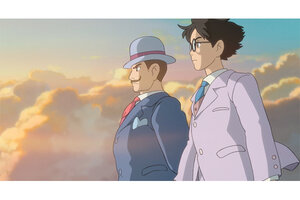'The Wind Rises' is beautiful but conceptually muddled
'Wind' director Hayao Miyazaki has seized on an intriguing idea for his plot but doesn't follow through.

'The Wind Rises' is directed by Hayao Miyazaki.
Courtesy of Walt Disney Studios
The great Japanese animator Hayao Miyazaki has said that his new film “The Wind Rises,” will be his last. (It opens for a week’s Oscar qualifying run before re-opening nationwide in February.) For all sorts of reasons, I hope this is not true.
“The Wind Rises” takes its title from a poem by Paul Valery that says, “The wind is rising! ... We must try to live!” The film’s hero is partially based on Jiro Horikoshi, the man who designed the Zero fighter plane that figured in the attack on Pearl Harbor. Miyazaki presents us with a naive young man who is so entranced by aeronautical flight that he never thinks through the dangers that lie in wait. He’s a “pure” scientist in an impure world. Miyazaki, whose father worked in the aviation industry, shares some of his hero’s naiveté, I think. He’s in love with the lyric gracefulness of flight, and his movie is visually as beautiful as anything he’s ever done.
Conceptually, it’s muddled. The collision between poetic fancifulness and grim reality, between peace and war, never falls into focus. Miyazaki has seized on a great theme only to soft-pedal it. Grade: B+ (Rated PG-13 for some disturbing images and smoking.)
